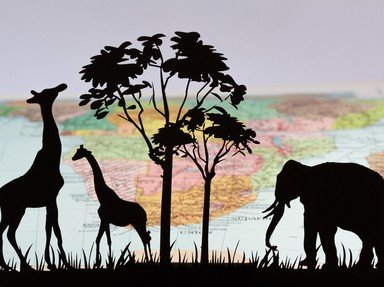Quiz Answer Key and Fun Facts
1. A traditional sight in London is that of the Queen's Royal Guards at Buckingham Palace. But did you know that the hats the guards wear are made from animal fur? The hats have no military purpose, they are not bullet proof, and are basically used because they are "traditional". From which animal are these hats made?
2. The organization PETA (People for the Ethical Treatment of Animals) in Germany, did an undercover investigation into the dog and cat fur trade. Which country is the dog and cat fur trade most common in?
3. What is the name of the practice that involves the surgical removal of skin from lambs' hindquarters, in order to eliminate the risk of flystrike in Merino sheep?
4. According to the U.N. it is estimated that around 70 million rabbits a year are killed in France alone. Some stores justify the selling of rabbit fur as "just a by-product" of the meat industry. Is this completely true?
5. Is Canada the only country to participate in seal clubbing?
6. In which of the following country/countries is fur farming completely illegal?
7. Clothing and accessories are also made from the pelts of Karakul lambs, often referred to as 'Persian' lamb. However, whilst a Karakul lamb coat can sell for as much as $12,000, a coat made of 'broadtail' can fetch as much as $25,000. What is 'broadtail'?
8. Leather is one of the most commonly used animal skins. Not just for clothes, but furniture, car seats, purses, wallets, bags, and countless other things. What country/countries does the majority of leather come from?
9. Animals without fur are also used to make clothes and accessories.
10. Every year around the world there is an event called "Fur Free Friday". It is where people gather together outside stores, to educate others about the issues surrounding the fur trade. When is this event held?
Source: Author
dopple44
This quiz was reviewed by FunTrivia editor
crisw before going online.
Any errors found in FunTrivia content are routinely corrected through our feedback system.


